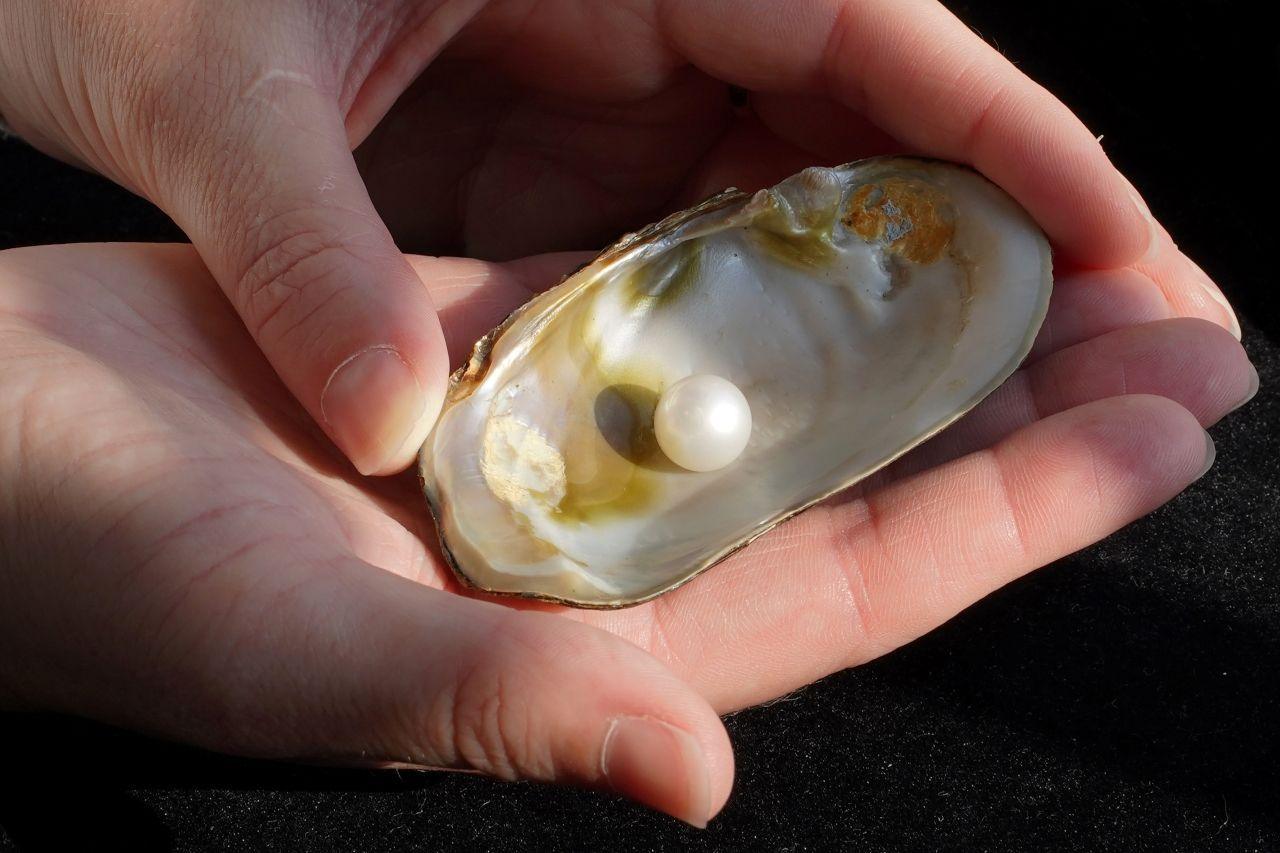Abernethy Pearl sold for nearly £94,000 at auction

The Abernethy Pearl was discovered in the River Tay in 1967
- Published
The largest Scottish freshwater pearl found in living memory has been sold for £93,951 at auction.
The Abernethy Pearl was discovered in the River Tay by William (Bill) Abernethy, who was credited as Scotland’s last dedicated pearl fisherman.
He found it in 1967, before the pearl fishing ban was introduced in Scotland in 1998.
Auctioneers Lyon and Turnbull, external said the pearl had been expected to fetch between £40,000 and £60,000.
Scotland’s last pearl fisherman Bill Abernethy (Video by Graham Fraser)
It is believed the Abernethy Pearl, affectionately known as Little Willie, could have been growing in its mussel for more than 80 years before Mr Abernethy found it, meaning it was created during the reign of Queen Victoria.
Weighing 43.6 grains, it is the largest freshwater pearl found in Scotland in modern history, although it is smaller than the Kellie Pearl which was discovered in the 1540s and is set in the Scottish Crown.
Mr Abernethy, who died in 2021 aged 96, never disclosed the exact location of the rare find.
It is thought only one in every 5,000 mussels found in Scottish rivers contains a pearl, and generally they are smaller than their saltwater counterparts.
How are pearls formed?
A natural pearl will form in an oyster when a foreign object, like a grain of sand, gets inside the shell.
To protect itself, the oyster will coat the unwelcome visitor with layers of nacre (mother-of-pearl) until the gem is formed.
Julius Caesar's desire to get his hands on our freshwater pearls is thought to have been his motivation behind invading the British Isles.